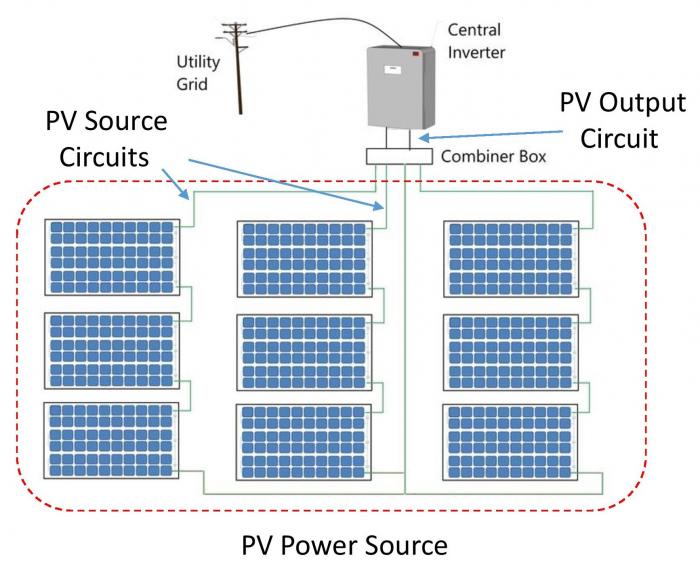We learned in the previous lesson the importance of the electrical codes, and of the NEC in specific, to govern PV design and installation processes. NEC articles cover installation regulations for all PV installations including systems with less than 50V, utility-interactive systems, and stand-alone systems including billboards, remote installations, and RVs.
Terminologies
There are specific terms used for PV system components and circuits. The NEC differentiates between a PV power source and a PV source circuit for PV systems.
A PV power source is an array or collection of arrays that generates DC power.
A PV source circuit is the circuit connecting a group of modules together and to the common connection point of the DC system. PV source circuits are usually a string of series-connected modules. For small systems, the PV power source is usually only one source circuit. For larger systems, the PV power source is usually composed of several paralleled PV source circuits.
A PV output circuit is the circuit connecting the PV power source to the rest of the system.
Figure 8.1 illustrates the proper use of these terminologies and how they relate to each other in the PV system. The three strings of nine total PV modules that form an array are referred to as a PV power source, while each string of three PV modules is referred to as a PV Source Circuit. In this case, the PV system has three PV Source Circuits. As the conductors exit the PV array and are joined together in a combiner box, they form a single power source that links the inverter with the combiner box at the DC side of the PV. This is the PV Output Circuit.
